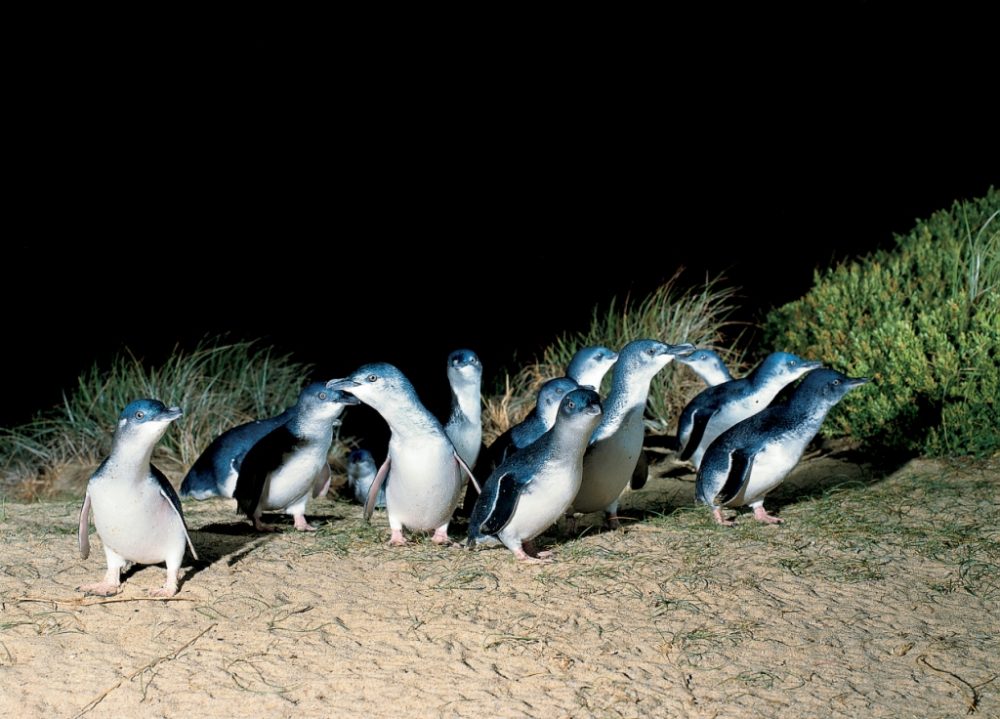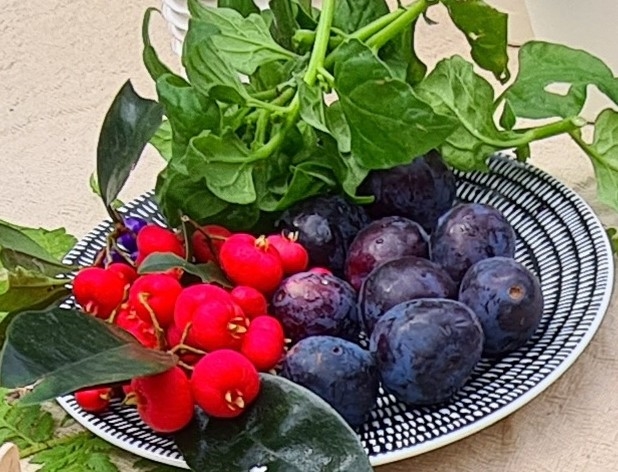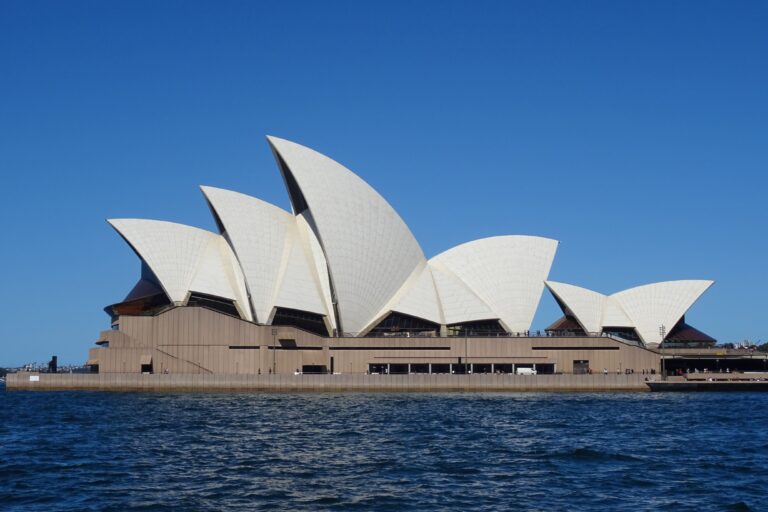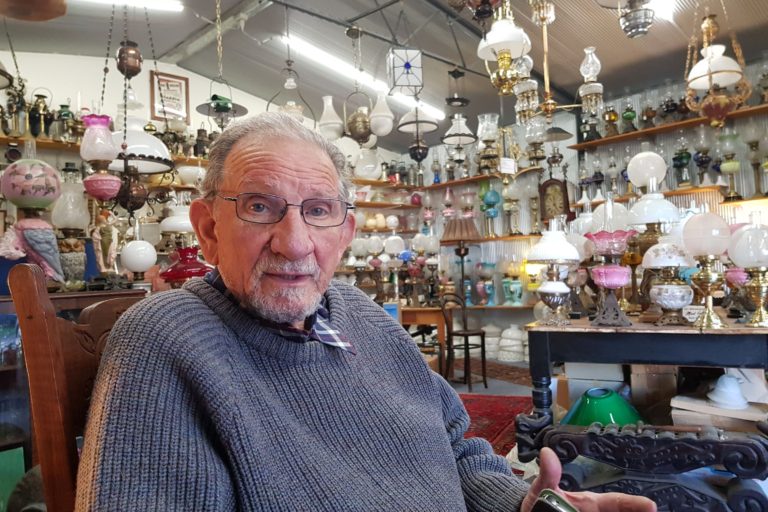By Neena Bhandari
Phillip Island (Victoria, Australia), 12.09.2008 (The Hindu Businessline): As the sun set on a balmy summer day, we made our way with hundreds of other tourists to the tiered stands on the Summerland Beach on Phillip Island, Victoria, Australia. There was excitement in the air as we walked to keep our date with the `Little Penguins’.
Patiently and silently, we waited for dusk to give way to darkness. Suddenly fingers were pointing to a mass of black in the distant shallow waters. No sooner had it appeared than it vanished into the vast expanse of the ocean. Probably a raft of penguins had sensed predators and retreated.
I readjusted my binoculars as the `huk huk’ call came closer. I could now clearly see the deep-blue sheen and the white chests gleaming in the moonlight. Within minutes, there were several rafts of little birds, waddling ashore to the safety of their burrows in the sand dunes. Some waited to regroup with mates, others paused to preen their feathers and the young ones rolled on the sand before starting to wobble on their two feet again.
What began with just a few rafts of 10-15 birds each soon transformed into a magical procession of hundreds of birds all around. The Penguin Parade, as it has come to be known, is a one-of-its-kind phenomenon. It brought back memories of the Olive Ridley turtles swarming the moonlit beaches of Bhitarkanika in Orissa.
This unique experience is shared by over five lakh visitors each year, making the Penguin Parade one of Australia’s most popular wildlife attractions. When an access track to the penguin colony was built in the late 1920s, tourism began to boom in the area. In 2006-07, over 6.4 lakh, 50 per cent of them international tourists comprising many Indians, visited the Phillip Island Nature Park.
The Penguin Parade can be viewed from the stands and observation boardwalks, where one can get a more personal viewing experience enriched with a commentary from an experienced ranger. On another occasion, I chose the comfort of an exclusive, elevated Sky Box with five other tourists and an experienced ranger. For an Ultimate Penguin Experience, one can view these tiny creatures with the latest night vision technology with park rangers providing an extensive commentary to intimate groups of people on a secluded beach.
Approximately 26,000 Little Penguins live in the waters around Phillip Island and 4,500 have burrows in the vicinity of Summerland Beach on the far southwestern point of the island. Standing at a mere 33 cm, the Little Penguins (Eudyptula minor) are the smallest of the 17 species of penguins, with their largest Antarctic cousin — the Emperor Penguin — at 70 cm. They leave for the sea at dawn, sometimes swimming up to 100 km to catch their daily ration of fish and return at dusk.
For keen eco-travellers, the Penguin Parade Visitor Centre at the park provides interactive computer displays and a live demonstration of penguin life in the burrow and a simulated demonstration of life at sea.
Phillip Island, which abounds in unique wildlife experiences, was first discovered in 1798. Today, the park extends to 2,750 hectares and is also home to the country’s largest colony of fur seals, koalas and a large population of Shearwater or mutton birds.
After the penguin, I was keen to sight the cuddly koala. Strolling through the bushland, craning my neck to spot a furry creature wedged in the fork of a eucalypt tree, it was on the treetop boardwalk that I had my first face-to-face encounter with the famous Australian marsupial. If fortunate, between December and February one can see young joeys emerge from their mother’s pouch to cling to her back. The island supports a large population of koalas and has a Koala Conservation Centre worth visiting during the evening feeding time.
Not far, at the southwestern tip of the island is Seal Rocks, which is home to a colony of up to 16,000 fur seals, with numbers peaking during breeding from October to December. Basking in the sunshine on the rocks, feeding their young or wrestling with another male seal, they quickly transform from ungainly land creatures to swift, sleek marine dwellers twisting and rolling in the clear waters. It is worth taking a cruise to the Rocks for close encounters with these elegant creatures.
Each year between September and May, the sunset skies of Phillip Island are darkened as the Shearwaters (Puffinus tenuirostris) or mutton birds return to their breeding colonies on the island after an incredible 8,000-km flight from Bering Strait in the Arctic Circle. There are raucous sounds of squabbling and cackling, as pairs greet, re-establish bonds and seek out old burrows… a treat for any birdwatcher.
As the park’s CEO said, “Phillip Island is more than just penguins on parade. The park is committed to providing outstanding visitor experiences whilst contributing to the ongoing conservation of the island’s wildlife and habitat.”
Under two hours’ drive from the State of Victoria’s capital, Melbourne, Phillip Island offers varied wildlife experiences, diverse accommodation, an array of fine restaurants (Taylors Waterfront Restaurant is a special treat not to be missed), shops and crafts centres, plenty of swimming and surf opportunities, making it a perfect family coastal getaway. During October, it even switches gear to host the 500cc Motorcycle Grand Prix.
Stringent conservation, and land and marine management policies are helping preserve this pristine nature reserve, where wildlife and humans have learnt to respect the space they share.
© Copyright Neena Bhandari. All rights reserved. Republication, copying or using information from neenabhandari.com content is expressly prohibited without the permission of the writer and the media outlet syndicating or publishing the article.




